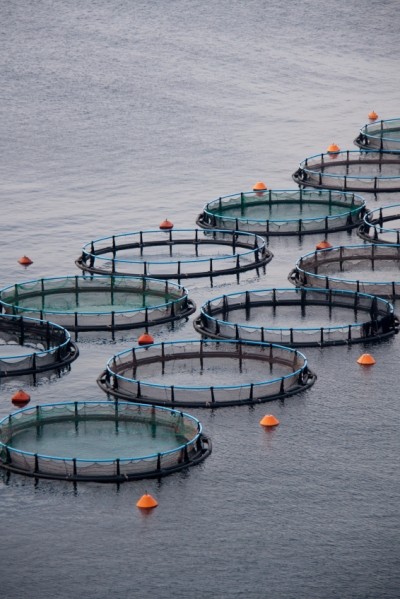Challenges remain for artificial meat, but interest continues

Recent studies made of the perception and reactions to artificial meat showed mixed results from different audiences, scientists said. The research groups looked at reactions from a cluster of predominantly students in Belgium along with tracking comments made online for several US publications regarding the public presentation of a hamburger made from artificial meat in 2013.
“While in vitro animal meat (IVM) is not yet commercially available, the public has already begun to form opinions of IVM as a result of news stories and events drawing attention to its development,” US researchers said. “As such, we can discern public perceptions of the ethics of IVM before its commercial release.”
The artificial meat discussed is a production of cultured animal cells grown in sheets, they added.
The work started with an examination of artificial meat as a way to address climate change said Linnea Laestadius, assistant professor of public health policy and administration in the Joseph Zilber School of Public Health at the University of Wisconsin-Milwaukee, as livestock production can contribute to greenhouse gas emissions. Additionally, the move toward consumption of an artificial meat product could release more land for alternative uses and reduce the number of animals raised for meat production.
“This artificial meat is a way to bypass livestock production,” she told FeedNavigator. “And it changes the effects of meat consumption without requiring a significant change to the diet.”
Although some advances toward the sustainable production of artificial meat have been made, questions still remain, she said.
Challenges
The challenges toward production include consumer acceptance and technology, said Laestadius.
While advances have been made on the technical side of production, it remains unclear if prices could be competitive with traditionally-raised meat in the near future, she said.
In the study in Belgium, participants said price could be a factor in their decision to buy artificial meat, researchers said.
“Four out of ten participants (42%) were not willing to pay a price premium for cultured meat compared to traditional meat, and this percentage only decreased slightly after receiving additional information about the environmental benefits of cultured meat relative to traditional meat production,” researchers said. “Of those willing to pay more for cultured meat, 79% did not want to pay more than 50% extra compared to traditional meat.”
Also, people have questions about the possibility of negative side effects said Laestadius. Production also is viewed by some as tampering with nature.
“The notion of a ‘yuck’ factor associated with IVM is common in public perception and media coverage,” US researchers said. “Finally, concerns about the naturalness and potential harms to humans stand out in particular among members of the public.”
Additionally, some concern has been mentioned that the development process could lead to corporate ownership of the food system, they said. Others said that it could be an “injustice” if the products created were used for low income populations.
Additionally, regulation may be another barrier, Laestadius said, as questions remain regarding how food safety agencies would address artificial meat.
“It’s hard to get a clear reading until it’s ready for commercial production,” she said.
Appeal
Despite the questions, the use or production of artificial meat also addresses some consumer concerns regarding meat production including environmental sustainability and animal welfare, US researchers said.
Some comments suggested that there was a “moral imperative” to develop such a product as it could be used to address global hunger, they said. And, it allows for the consumption of meat without the guilt of killing an animal.
“Overall, many commenters recognized IVM development as an ethically desirable outcome because it would both facilitate personal ethical consumption and provide benefits for animals, global food security and justice, and environmental sustainability,” researchers said. “Inherent to these perceptions is not only valuing animals, the environment, and global justice, but also trust in the scientific process to actually be able to deliver these benefits.”
Additionally, if fewer animals were raised for meat production, some fields currently growing feed crops could be used for food crops, Laestadius said. It could be used for products used by people.
Moving forward
One plan for the future of IVM might be to offer it as an option, said US researchers. “IVM should also be promoted based on its inherent traits, rather than as the solution to climate change and animal suffering,” they added.
Also for consideration is how other artificially produced animal products may be received, said Laestadius. These include items like leather, eggs and milk.
“I think leather may be the one that becomes accepted most readily,” she said. “But if you can produce competitively priced artificial alternatives to the byproducts of the livestock raised for meat, it may also change the economics of meat production.”
Source: J Agric Environ Ethics
Title: Public Perceptions of the Ethics of In-vitro Meat: Determining an Appropriate Course of Action
DIO: 10.1007/s10806-015-9573-8
Authors: Linnea Laestadius

![[pic: (c) istock.com]](/var/wrbm_gb_food_pharma/storage/images/_aliases/wrbm_medium/3/8/5/5/1835583-1-eng-GB/The-US-is-going-to-be-increasingly-important-for-global-food-security-climate-change-report-looks-at-risks-for-agricultural-producers-feed-and.jpg)






